|
Home of the Woody
by Bob
Brooke
When someone says “Woody” today, many
middle-age and younger people probably don’t think of a car. In
fact, the iconic Woody was a form of station wagon with real wood
paneling on its sides, and in early versions, its frame. The woody
was to the post- World-War-II generation what the SUV is to today’s
suburban families.
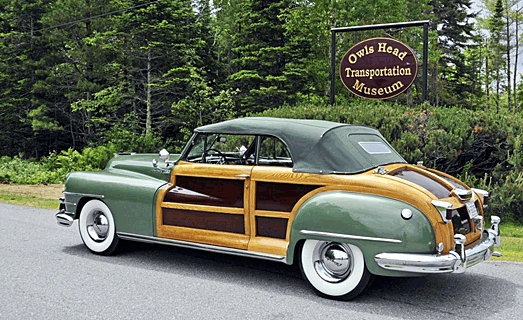
Because they were made of wood, plus the number of them produced was
small, Woody’s are hard to find today. But not at the Owl Head
Transportation Museum, founded in 1974 along the coast of Maine near the
Know County Regional Airport. Although there are many automobile and
airplane museums in the U.S., none mix the two together, along with
other forms of transportation, not just on display but in restored and
working order. Here machines of a bygone era are celebrated through
conservation, preservation and demonstration.

Unlike many other transportation museums, the Owls Head Transportation
Museum operates its collection of antique and vintage aircraft, ground
vehicles and engines at a number of special events it holds throughout
the year. Care and maintenance of these historic vehicles requires the
attention of a large volunteer workforce that, under the supervision of
a professional staff, ensures that its collection is in operating
condition. And while the museum is open all year, summer is the best
time to see its collection in action during scheduled airshows and
ground vehicle demonstrations.
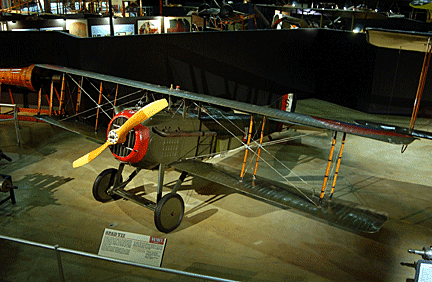 The
museum got its start with a handwritten note on the back side of a
graduation program mailed to Jim Rockefeller, who owned a grass airstrip
on the side of a mountain in Camden, Maine. The message, from Tom
Watson, who had his own grass strip next to his North Haven Island
summer home in sight of the Camden Hills, asked how Rockefeller felt
about some old airplanes flying around Owls Head. The
museum got its start with a handwritten note on the back side of a
graduation program mailed to Jim Rockefeller, who owned a grass airstrip
on the side of a mountain in Camden, Maine. The message, from Tom
Watson, who had his own grass strip next to his North Haven Island
summer home in sight of the Camden Hills, asked how Rockefeller felt
about some old airplanes flying around Owls Head.
Rockefeller, a builder of boats and airplanes, asked his friend Steve
Lang if he’d like to help spend some seed money that Watson said he
would put up—if they could obtain a permission to fly old airplanes at
the Rockland Airport. The two discussed starting a museum as a way to
fly old airplanes.
Automobiles, which form a large part of the museum’s collection today,
weren’t mentioned. Rockefeller and Watson obtained a piece of
undeveloped land at the end of old Runway 17 from Knox County with the
idea of developing a cultural park. It had been earmarked for an
industrial park, which hadn’t sat well with the locals. Though Owls Head
was happy to unload the land, there was no access road. They spent their
seed money to built a dirt road and soon drew up papers to form a
nonprofit museum with a mission to demonstrate old airplanes.
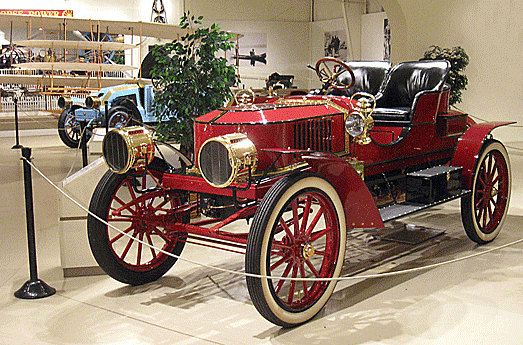
Next Lang and Rockefeller came up with the idea of a rally featuring old
planes, cars and engines to arouse interest. In 1975, wings, wheels, old
engines and contraptions of all types and people of all backgrounds
gravitated to the first official Museum Rally. A 1912 Curtiss Pusher
flew overhead, while vapor engulfed a Stanley Steamer whistling by. High
wheel bicycles, chugging old engines, and hundreds of antique cars were
enjoyed by thousands of visitors at the first event of its type ever
held in Maine. The dirt road, covered with oil weekly to keep the dust
down, brought visitors to a 40’ x 80’ building with two planes and two
cars. Though not a very auspicious beginning, it was a start.
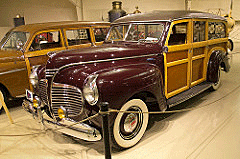 Today,
a dedicated team of people have committed their energy, enthusiasm,
compassion, and resources to maintain this concept. The collection has
grown from two automobiles, two aircraft, a high-wheel bicycle and a
100-ton steam engine to an internationally recognized collection of
landmark vehicles and related technology. Today,
a dedicated team of people have committed their energy, enthusiasm,
compassion, and resources to maintain this concept. The collection has
grown from two automobiles, two aircraft, a high-wheel bicycle and a
100-ton steam engine to an internationally recognized collection of
landmark vehicles and related technology.
One of the most unique vehicles on display at the museum is a 1931 Ford
Woody. As a variant of body-on-frame construction, the Woody as a
utility vehicle or station wagon originated from the early practice of
manufacturing the passenger compartment portion of a vehicle in
hardwood. Woodys were popular in the United States and were produced as
variants of sedans and convertibles as well as station wagons, from
basic to luxury. Early versions were third-party conversions of regular
vehicles—some by large, reputable coach-building firms and others by
local carpenters and craftsmen for individual customers. Then Ford
decided to produce its first Woody in 1932 and eventually sold 1,654 of
them. But maintaining the real wood finish was more of a challenge than
designers figured upon. Eventually, bodies constructed entirely in steel
supplanted wood construction—for reasons of strength, cost, safety, and
durability.
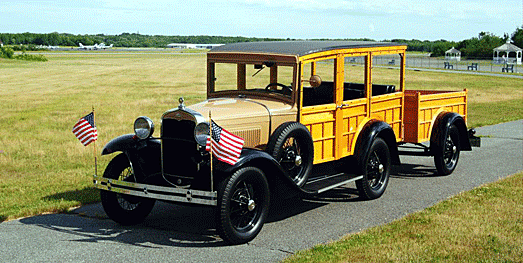
Buick's 1953 Super Estate Wagon and 1953 Roadmaster Estate Wagon were
the last production American station wagons to retain real wood
construction.
<
Back to More Antiques to View
Next Article > |
